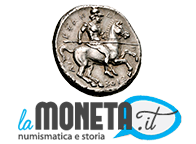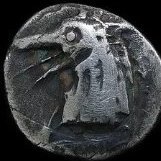Tutte le attività
Questo elenco si aggiorna automaticamente
- Ultima ora
-
50 centesimi 1862 vitt.emanuele II AUTENTICITA
torpedo ha risposto a un topic di Paio70 inviato in Richiesta Identificazione/valutazione/autenticità
È buona anche a mio parere, come conservazione MB. -
Slittamento di conio e frattura di conio
Antonino1951 ha risposto a un topic di seshat inviato in Monete Bizantine
Salve,puoi evidenziare lo slittamento,non lo vedo,è bella centrata.quella che hai evidenziato è una frattura del tondello,non del conio,forse dovuta al fatto che i bizantini facevano largo uso di bronzo già monetato e riciclato,mia opinione -

10.000 lire Volta AA ... A
Guysimpsons ha risposto a un topic di Gael inviato in Cartamoneta e Scripofilia
Ci sono gli appassionati delle AAA... come ha detto il buon @PriamoB : peccato che non sia FDS! A prescindere credo sia abbastanza ricercata anche se ne sono circolate 1 milione! -

Monete medievali 2
Ale75 ha risposto a un topic di Anto63 inviato in Richiesta Identificazione/valutazione/autenticità
Ciao @Anto63 secondo me è una crazia del secondo tipo di Ferdinando II de Medici. https://numismatica-italiana.lamoneta.it/moneta/W-FIIMF/8 -
Parere su bronzetto dei Tyrrhenoi
Antonino1951 ha risposto a un topic di ARES III inviato in Monete greche: Sicilia e Magna Grecia
Salve,le monete riconiate siciliane,in genere sull'undertype litra con delfini,sono difficili ad essere giudicate da foto,ci sono molti fattori da considerare.potrebbe essere buona ma ritoccata,specialmente l'occhio e la bocca,ci vorrebbe yohnny sicily che da pulitore ne avrà viste diverse -

Alta conservazione e numero di esemplari.
gennydbmoney ha risposto a un topic di Releo inviato in Monete e Medaglie delle Due Sicilie, già Regno di Napoli e Sicilia
Secondo me il concetto di Gigante è diverso da ciò che almeno Layer ed io stiamo dicendo... -
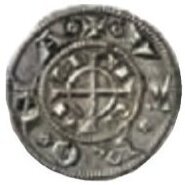
Monetazione di Venezia per il Levante
soavenum ha aggiunto un nuovo link in Monete Medievali di Zecche Italiane
Buonasera, mi rivolgo agli esperti della monetazione in oggetto, per chiedere se sia, e dove possa essere, disponibile e consultabile online il catalogo per la monetazione del Levante veneziano Dalmazia e Albania di Soterios Gardiakos dovendo verificare alcuni dati tecnici di alcune monete del periodo. Ringrazio veramente per la attenzione. Soavenum -

Richiesta di identificazione - moneta di Claudio II
Ale75 ha risposto a un topic di AntonioPiano95 inviato in Richiesta Identificazione/valutazione/autenticità
Ciao @AntonioPiano95 guarda se fosse questo IOVI VICTORI https://www.acsearch.info/search.html?term=Claudius+ii+antoninian++Iovi+victori&category=1-2&lot=&date_from=&date_to=&thesaurus=1&images=1&en=1&de=1&fr=1&it=1&es=1&ot=1¤cy=usd&order=0 -
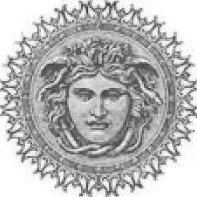
Monete super-extra bizzarre della Terra
nikita_ ha risposto a un topic di nikita_ inviato in Monete Estere
Niue 2026 - 5 dollari in ag.999 (62,20) Famosa insegna luminosa di benvenuto all'ingresso di Las Vegas -

Testone Paolo V Camillo Borghese senza ritratto
Asclepia ha aggiunto un nuovo link in Monete e Medaglie Pontificie
Buonasera agli amici collezionisti di monete Pontifice. Chiedo aiuto per un'identificazione chiara e completa di questa moneta. Da quello che sono riuscito a capire si tratta di un Testone, questa pesa 9,33 grammi... e il pontefice dovrebbe essere Paolo V. Ho trovato rovesci simili, anepigrafi e con i due putti/angeli a sostenere lo stemma sopra la targa ROMA, attribuiti appunto a Paolo V. Vorrei però qualche conferma. Lascio la parola a chi ne sa più di me. Vi ringrazio in anticipo. Aggiungo per completezza D/ S.PAVLVS ALMA. ROMA. R/ in esergo .ROMA. nota : come segno di interpunzione il triscele 🔺️ Grazie ancora. -
Alexander III, 336 – 323 and posthumous issues Decadrachm of 5 shekels, Babylon circa 327, AR 35 mm, 38.92 g. Alexander on Boukephalos facing r., spearing at a mahout and his master seated on an Indian elephant retreating r.; the mahout and master look back towards Alexander, the latter grasps the end of Alexander's sarissa with his r. hand, the former brandishes a spear in his r. hand above his head while holding two further spears in his l. hand; above, Ξ. Rev. Alexander standing l. in military attire, wearing plumed Phrygian (?) helmet and holding a thunderbolt in his r. hand and a sarissa in his l.; above, Nike flies r. to crown him. In lower l. field AB ligate. BMC 61 and pl. XXII, 18. Price, Circulation at Babylon in 323 B.C. in Mnemata: Papers in Memory of Nancy M. Waggoner, 9B (this coin). Hollstein, Taxiles' Prägung für Alexander den Grossen, SNR 68 (1989), p. 6, 2 (this coin illustrated). Price, The Poros coinage of Alexander the Great, a Symbol of Concord and Community, in Studia Paolo Naster Oblata, pl. IX, 3. Mitchiner Type 21. Dürr, Neues aus Babylonien, SM 94, May 1974, p. 36, 1. Price pp. 452–453 and pl. CLIX, H. Zhuyuetang 101 (this coin) Exceedingly rare, ten specimens known of which only five are in private hands. An issue of tremendous importance and fascination, of which this is undoubtedly one of the finest specimens known. Areas of weakness, but unusually clear and complete and unusually good metal for the issue. Good very fine Ex Leu 45, 1988, 132 and Leu 54, 1992, 85 sales. Privately purchased from CNG (inventory number 50423) In 327 BC, Alexander the Great and his army entered the Indian subcontinent and waged war on a regional Punjabi king named Porus. At the Battle of the Hydaspes River (327 BC), the Macedonian army faced the Indian forces of Porus and his war elephants - terrifying creatures that no Macedonian or Greek in Alexander's army had ever seen or faced in battle before. However, despite the fear inspired by the elephants and the deadly accuracy of Porus' archers, Alexander's army won the day. Respecting the bravery and fighting spirit of Porus, Alexander appointed him as a local satrap to govern the region on his behalf. Alexander then continued the exploration and attempted conquest of India despite the increasing misgivings of his men. At last, in 325 BC, the army finally mutinied near the Ganges River and forced him to begin the long and gruelling westward march home. This extremely rare coin, one of the so-called "Porus medallions", is thought to have been struck as a form of commemorative donative paid out to the army after the return from India. The apparent use of the shekel weight standard has led to the conclusion that the coinage was produced at Babylon or possibly Susa while the specifically Indian and martial types may have been intended to remind recipients of their former glory in the East at a time when the army was tiring of Alexander's campaigns and desirous of returning home to Macedonia. In 324 BC, the army mutinied again at Opis in Babylonia and demanded that Alexander begin demobilising his loyal and long-serving veterans. The present piece - the largest denomination in the "Porus medallion" series - features remarkable types that are completely new for Greek coinage. The obverse seems to represent a remarkable duel between Alexander, charging right on the back of his famous steed Boukephalos, and Porus riding on the back of an elephant with an attendant. Alexander spears the attendant in the back while Porus turns to attack him. What is most interesting about this type, in addition to the fact that it is one of the earliest numismatic representations of an elephant, is that the duel shown here never seems to have taken place. The type, especially when read in connection with the reverse showing Alexander crowned by Nike, implies a direct victory over Porus in personal combat. However, none of the ancient historians, including Arrian, Curtius, or Plutarch ever suggest that any sort of duel like this ever took place. Instead, they report that Alexander fought alongside his own cavalry, but also watched Porus fight with admiration, frequently sending messengers to ask him to surrender in the hope that the Indian king would not realise his plan to die in battle. In the end, Porus did surrender, but not because he had been defeated personally by the Macedonian king, but because he was conquered by thirst and exhaustion. In short, the type is propaganda for Alexander's greatness. The reverse depicts the full figure image armoured for battle and crowned by Nike. This is the first unequivocal portrait of the famous Macedonian king on a coin (there still remains much doubt as to whether the image of Heracles on his imperial tetradrachms was considered to represent Alexander during his lifetime), but even here he is shown as something more than a mere mortal. He is elevated to the level of Zeus, the supreme god of the Olympian pantheon, by the placement of a thunderbolt in his hand. The type seems to advertise Alexander not only as a world conqueror, but as a conqueror of the universe extending even into the realm of the gods. The type appears to be related to a lost painting of "Alexander wielding a thunderbolt" executed by the court painter Apelles. https://www.numisbids.com/sale/9837/lot/31
-
_compress55.thumb.jpg.3fa3bd76a5efe685e4de20ff9bd635b4.jpg)
La biblioteca numismatica ideale
demonetis ha risposto a un topic di talpa inviato in Bibliografia numismatica, riviste e novita' editoriali
C'è per caso un indice dove si riportano da quali anni e numeri di "Rassegna Numismatica" sono stati estratti? Lo potresti pubblicare? Grazie. -
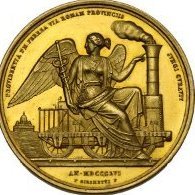
Alta conservazione e numero di esemplari.
Oppiano ha risposto a un topic di Releo inviato in Monete e Medaglie delle Due Sicilie, già Regno di Napoli e Sicilia
“Conservazioni particolarmente alte possono cambiare, come dimostrano le valutazioni, le rarità.” [Gigante] Non stiamo scoprendo l’acqua calda in questa discussione. In altri termini, generalmente, i cataloghi riportano la rarità in funzione alla reperibilità generica della moneta. Sta poi nel compilatore del catalogo sottolineare altri aspetti a supporto di un grado di rarità superiore. -
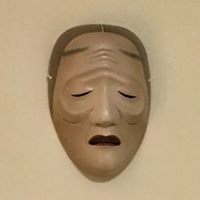
moneta da € 2 del 2002 valore?
Alan Sinclair ha risposto a un topic di wallace inviato in Monete a circolazione ordinaria di tutti i Paesi dell’Area Euro.
Buonasera, consiglio quando verrà spesa di presentarla dalla parte migliore, ovvero il rovescio ( dal lato dei 2 euro ), per ragioni estetiche . -
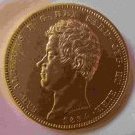
moneta da € 2 del 2002 valore?
Pontetto ha risposto a un topic di wallace inviato in Monete a circolazione ordinaria di tutti i Paesi dell’Area Euro.
Buonasera. È una moneta che ha sofferto, ma per fortuna vale ancora 2€. La brutta ossidazione indica che probabilmente è stata dimenticata a contatto con qualche superficie umida per lungo tempo, oppure con qualche liquido. Di preciso non lo sapremo mai. Ma ora è tornata al lavoro, pronta come non mai a circolare. Spendila con orgoglio 🙂 -
Alta conservazione e numero di esemplari.
ilLurkatore ha risposto a un topic di Releo inviato in Monete e Medaglie delle Due Sicilie, già Regno di Napoli e Sicilia
Aggiungo un altro quesito: in riferimento alle monete italiane da investimento in oro. Un mio conoscente, alla terza generazione di gioiellieri, mi ha esternato in un paio di occasioni che, secondo lui, tutti i Marenghi italiani sono sottovalutati in riferimento al grado o meno di rarità. Da suo nonno a lui, e avendo confidenza con molti altri che lavorano nel medesimo campo, a suo dire sono così tanti gli esemplari mandati a fondere negli ultimi 70 anni da poter influire sul grado di rarità dei medesimi. Su questo aspetto, c'è un modo di stabilire quante monete di siffatto genere ci siano ancora in circolazione? -
wallace si è registrato sul forum
-
moneta da € 2 del 2002 valore?
wallace ha aggiunto un nuovo link in Monete a circolazione ordinaria di tutti i Paesi dell’Area Euro.
Buonasera scusate non sono un esperto ma questa moneta mi ha incuriosito da subito,potrei sapere da chi ne sa più, se ha un valore,grazie. -

Alta conservazione e numero di esemplari.
Layer1986 ha risposto a un topic di Releo inviato in Monete e Medaglie delle Due Sicilie, già Regno di Napoli e Sicilia
Basta che non fai confusione tra rarità e valore economico -

Alta conservazione e numero di esemplari.
Oppiano ha risposto a un topic di Releo inviato in Monete e Medaglie delle Due Sicilie, già Regno di Napoli e Sicilia
Ma il Gigante non adotta in fondo anche questa metodologia? -
Alta conservazione e numero di esemplari.
Releo ha risposto a un topic di Releo inviato in Monete e Medaglie delle Due Sicilie, già Regno di Napoli e Sicilia
Alberto, non ho mai pensato a due parametri differenti e separati. Secondo me, l’alta conservazione ha nel suo DNA due componenti fondamentali: la “perfezione” della moneta e la “rarità” che a quella moneta deriva proprio dall’essere in alta conservazione. Se, nell’ambito della stessa tipologia e per lo stesso millesimo, alla “perfezione” si associa un numero esiguo di esemplari conosciuti, a quella moneta andrebbe attribuito un certo valore, se, invece, vi si associasse un numero considerevole di esemplari conosciuti, per quella moneta, nel tempo, il valore andrebbe rivisto. Insomma, a me dà fastidio vedere in asta monete perfette, ma in gran numero ed a prezzi sempre vertiginosi. La rarità non può essere messa al bando solo perché siamo di fronte all’alta conservazione. Gli spiccioli di Rocco sono sì ottimamente conservati, ma dove se ne trovano altri a quel livello? -

Alta conservazione e numero di esemplari.
Layer1986 ha risposto a un topic di Releo inviato in Monete e Medaglie delle Due Sicilie, già Regno di Napoli e Sicilia
Quanti fdc rame rosso di una moneta del viceregno comunissima riusciamo a trovare? Ho estremizzato l'esempio per dare l'idea che in fondo pure la conservazione ha il suo peso su una rarità, anche se quelle riportate nei cataloghi riportano la rarità in senso assoluto della moneta, anche perchè quanto devono essere grandi questi cataloghi? -

che moneta è?
nikita_ ha risposto a un topic di pato19 inviato in Richiesta Identificazione/valutazione/autenticità
Sembrerebbe un mezzo noble od un noble in oro di Edoardo III d'Inghilterra (XIV secolo), ma non è la mia monetazione e non sono in grado di dire se autentica o meno, è meglio che aspetti altri interventi. -
Buono 2 lire 1923 Prova e Prova di Stampa.
ilLurkatore ha risposto a un topic di RogerRaphael inviato in Regno d'Italia: identificazioni, valutazioni e altro
Addirittura 😱 E dal 1947 al 28 febbraio del 2002? 🤔 😅 PS: manco io mi rendo conto di quanto tempo sia passato dal passaggio all'Euro... - Oggi
-

Alta conservazione e numero di esemplari.
Oppiano ha risposto a un topic di Releo inviato in Monete e Medaglie delle Due Sicilie, già Regno di Napoli e Sicilia
Quindi la Rarità in funzione (anche) del grado di conservazione. Corretto? -
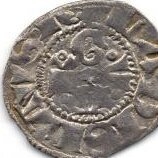
identificazione
santone ha risposto a un topic di Anto63 inviato in Richiesta Identificazione/valutazione/autenticità
Svizzera, 1 scellino
Lamoneta.it
Il network
Hai bisogno di aiuto?
